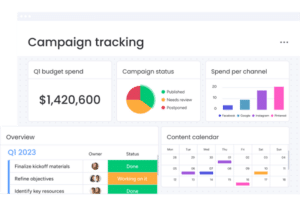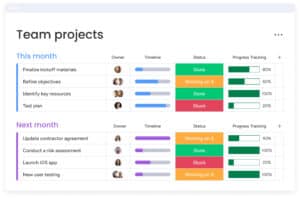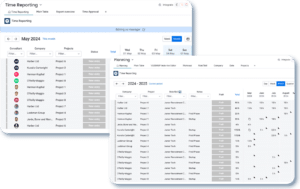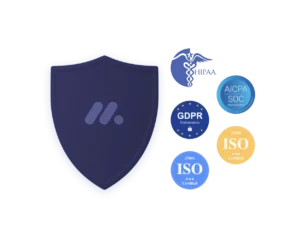Introduction
The Imperative of Modernizing Legacy Systems
In today’s rapidly evolving digital landscape, the migration of legacy systems remains a pivotal challenge for businesses worldwide. Embracing technological advancements is not just a matter of staying current; it’s about maintaining a competitive edge. This brings us to the crux of our discussion: Migrating legacy systems: integration challenges and strategies. The process of migrating from outdated infrastructures to modern, efficient systems is fraught with complexities, yet it is an essential endeavour for businesses aiming to thrive in the digital era.
Navigating the Intricacies of System Integration
The journey of migrating legacy systems is not merely a technical overhaul; it’s a transformational process that reshapes the way organizations operate. In this comprehensive exploration, we delve into the multifaceted nature of migrating legacy systems, underscoring the integration challenges that businesses face and the strategic approaches they can adopt. The aim is not only to illuminate the hurdles but also to offer practical solutions and strategies that facilitate a smoother transition from old to new, ensuring that the integration of new systems adds value and propels businesses towards their future goals.
Setting the Stage for a Strategic Migration
As we embark on this exploration of migrating legacy systems: integration challenges and strategies, it’s important to understand that the path to successful system integration is as diverse as the businesses undertaking it. Each organization’s journey is unique, shaped by its specific legacy systems, business objectives, and operational needs. However, common themes and strategies emerge, offering valuable insights and guiding principles for any business on this journey. This introduction sets the stage for a deeper dive into these challenges and strategies, providing a roadmap for businesses ready to navigate the complex yet rewarding terrain of system migration.
Understanding Legacy Systems
Defining Legacy Systems in the Modern Business Context
Before delving into the intricacies of migrating legacy systems: integration challenges and strategies, it’s crucial to grasp what legacy systems entail. Legacy systems are essentially outdated computer systems, software, or technologies that, despite being antiquated, are still in use. They often form the backbone of many organizations, supporting critical business processes and functions. However, their age typically means they are less efficient, more vulnerable to security risks, and incompatible with newer technologies, which can impede a business’s growth and adaptation to modern demands.
The Reliance on Legacy Systems: A Double-Edged Sword
While often perceived as a hindrance, these systems remain operational for several reasons. They may contain valuable historical data, represent significant past investments, or have unique features that are intricately woven into an organization’s operations. Yet, this reliance can be a double-edged sword, as migrating legacy systems become an increasingly pressing concern. Businesses find themselves balancing the need to maintain these critical, albeit outdated, systems with the imperative to modernize for efficiency, security, and innovation.
Common Characteristics and Challenges of Legacy Systems
Legacy systems are marked by several defining characteristics. They often operate on obsolete platforms or languages, lack support or updates, and may not interact well with newer technologies. This incompatibility poses significant challenges in migrating legacy systems, as integration with modern systems requires careful planning and strategic execution. Businesses embarking on this journey must navigate these challenges, understanding the limitations and potential risks involved in the migration process. The complexities inherent in migrating legacy systems: integration challenges and strategies underline the need for a thorough understanding of these systems to ensure a successful transition.
Omnitas Newsletter
Sign up for our monthly newsletter to stay up-to-date on our latest blog articles, videos and events!
Thank you!
You have successfully joined our subscriber list.
The Need for Migration
Why Businesses Must Embrace Legacy System Migration
In the context of “Migrating Legacy Systems: Integration Challenges and Strategies,” understanding why migration is not just beneficial but often essential, is crucial. Businesses are operating in an increasingly digital-centric world where agility, scalability, and security are paramount. Legacy systems, with their limitations, can significantly hinder an organization’s ability to respond to market changes, adopt new technologies, and protect against evolving cybersecurity threats. This section explores the driving forces behind the need to migrate from outdated systems to more modern, flexible, and secure infrastructures.
Digital Transformation: A Catalyst for Legacy System Migration
A key factor propelling the migration of legacy systems is the broader digital transformation initiatives undertaken by businesses. This transformation involves integrating digital technology into all areas of a business, fundamentally changing how organizations operate and deliver value to customers. As companies strive to become more data-driven and customer-centric, the limitations of legacy systems become apparent. The integration challenges and strategies involved in migrating legacy systems are central to this transformation, enabling businesses to leverage the benefits of advanced technologies like cloud computing, artificial intelligence, and big data analytics.
Challenges in Migrating Legacy Systems
Navigating the Technical Complexities
A significant aspect of migrating legacy systems: integration challenges and strategies involves confronting various technical complexities. These include integrating disparate systems, ensuring data consistency during migration, and dealing with obsolete technologies that are often poorly documented. The task of migrating data from legacy systems to new platforms can be particularly daunting, posing risks of data loss or corruption. Additionally, ensuring that new systems can effectively communicate with existing infrastructure, without disrupting business operations, is a critical technical challenge that requires meticulous planning and execution.
Organizational and Cultural Hurdles
Beyond technical obstacles, migrating legacy systems also involves overcoming organizational challenges. Resistance to change is a common issue, as employees are often accustomed to the existing systems and processes. This resistance can stem from fear of the unknown, perceived threats to job security, or discomfort with learning new technologies. Effectively managing these cultural and human factors is integral to the successful migration of legacy systems. Addressing these concerns through clear communication, training, and involving stakeholders in the migration process is essential for a smooth transition.
Financial Considerations and Operational Disruptions
Finally, the financial implications and potential operational disruptions associated with migrating legacy systems cannot be overlooked. These challenges include the costs associated with purchasing new software or hardware, training staff, and possibly hiring external consultants. Moreover, the migration process can lead to temporary disruptions in business operations, affecting productivity and customer service. Understanding and mitigating these financial and operational risks are key components of migrating legacy systems, ensuring that businesses can navigate this transition with minimal impact on their ongoing operations.
Integration Strategies for Legacy Systems
Initial Assessment and Planning: Laying the Foundation
A critical first step in migrating legacy systems: integration challenges and strategies is conducting a thorough initial assessment and planning phase. This process involves evaluating the current legacy systems, identifying the business processes they support, and understanding the technical and operational requirements of the new system. It’s also crucial to define clear migration goals and objectives, which will guide the selection of appropriate integration strategies. This planning stage should involve stakeholders from different departments to ensure a comprehensive approach that aligns with the overall business strategy.
Choosing the Right Integration Tools and Technologies
Once the groundwork is laid, the next step is selecting the appropriate tools and technologies for system integration. This selection is pivotal in migrating legacy systems, as it directly impacts the efficiency and effectiveness of the migration process. Businesses should consider factors like compatibility with existing systems, scalability, ease of use, and long-term support. Leveraging modern integration solutions, such as middleware and APIs (Application Programming Interfaces), can facilitate smoother data transfer and ensure seamless communication between old and new systems.
Best Practices in System Integration
Adopting best practices is essential in navigating the integration challenges of migrating legacy systems. These practices include incremental migration (to minimize disruptions), thorough testing at each stage (to ensure data integrity and system functionality), and maintaining clear documentation (for ongoing support and troubleshooting). Additionally, businesses should prioritize strong project management, ensuring regular communication and stakeholder involvement throughout the migration process. By adhering to these best practices, organizations can enhance the success rate of their legacy system migration and integration efforts.
Ensuring a Smooth Transition
Effective Change Management: Key to Successful Migration
A fundamental component of migrating legacy systems is the implementation of effective change management practices. Successful migration is not just about the technical aspects; it’s equally about managing the human element. This involves preparing the entire organization for the change, from top management to end-users. Clear and consistent communication is crucial to address concerns, set expectations, and convey the benefits of the new system. Involving employees early in the process and providing adequate training ensures that they are not only ready but also supportive of the change.
Training and Support Strategies
Training and support are indispensable in ensuring a smooth transition during the migration process. Comprehensive training programs should be designed to cater to different user groups, taking into account their specific roles and interactions with the new system. Post-migration, ongoing support is vital to address any issues swiftly and to assist users in adapting to the new system. This support can be in the form of help desks, online resources, or continuous training sessions. In turn, this ensures users feel confident and competent in using the new system.
Monitoring and Continuous Improvement Post-Migration
After the migration is completed, it’s essential to monitor the performance of the new system and seek feedback from users. This phase is critical in identifying any unresolved issues and areas for improvement. Continuous monitoring and gathering user feedback help in fine-tuning the system to better meet the needs of the business and its users. This step in migrating legacy systems is about rectifying immediate issues. Additionally, it’s also about setting a precedent for ongoing optimization and adaptability in a constantly evolving technological landscape.

Future Trends and Considerations
Emerging Technologies Influencing Legacy System Migration
In the realm of migrating legacy systems: integration challenges and strategies, staying abreast of emerging technologies is crucial. Innovations such as cloud computing, artificial intelligence (AI), and machine learning are redefining the landscape of system migration and integration. These technologies offer new ways to streamline and automate the migration process. Additionally, they bring advanced capabilities that can significantly enhance business operations post-migration. For instance, cloud-based solutions offer scalability and flexibility, while AI can provide predictive analytics and enhanced data processing capabilities.
Predictions for the Future of System Integration
As we look towards the future, the field of system integration and legacy system migration is set to evolve continuously. The increasing adoption of Internet of Things (IoT) devices and the growing importance of big data analytics will likely bring new integration challenges and opportunities. Businesses will need to remain adaptable, embracing these technological advancements to stay competitive. Future strategies in migrating legacy systems will need to account for these technological shifts. This ensures seamless integration with emerging digital ecosystems.
Preparing for Ongoing Technological Evolution
The final consideration in migrating legacy systems involves preparing for ongoing technological evolution. Businesses must adopt a forward-thinking approach, anticipating future trends and building systems that are adaptable and scalable. This means choosing integration solutions that are not only effective for current needs but also capable of accommodating future technological advancements. By fostering a culture of continuous learning and innovation, organizations can position themselves to effectively respond to the ever-changing tech landscape. This ensures long-term success in their migration and integration endeavours.
Conclusion
Summarizing the Journey of Legacy System Migration
As we conclude our exploration of migrating legacy systems: integration challenges and strategies, it’s clear that this journey is both complex and critical for businesses in the digital age. From understanding the intricacies of legacy systems to navigating the challenges and employing effective strategies, each step in this process is pivotal. The integration of modern technologies like cloud computing, AI, and IoT is not just a trend but a necessity. Especially for businesses seeking efficiency, scalability, and competitive advantage.
The Road Ahead: Embracing Change with Confidence
The migration of legacy systems is more than a technical endeavour; it’s a strategic move towards future-proofing your business. By embracing these changes with the right approach and guidance, organizations can unlock new potentials and drive significant business growth. The key is to approach this migration with thorough planning, the right tools, and a mindset geared towards continuous adaptation and improvement.
Ready to Transform Your Business?
Are you contemplating migrating your legacy systems and looking for expert guidance, especially in leveraging monday.com as your cloud software solution? As top experts in the platform, we at Omnitas Consulting are here to assist you. We invite you to book an introductory call with us below to discuss how we can tailor a migration strategy that fits your unique business needs. Whether you’re aiming for increased efficiency, better data management, or seamless integration, our expertise with monday.com can pave the way for your successful digital transformation.
Stay Informed and Ahead of the Curve
If you found this article insightful and wish to stay updated on similar topics, we invite you to subscribe to our monthly newsletter below! By doing so, you’ll gain access to a wealth of information on system integration, digital transformation, and cutting-edge business solutions.
























